Dehydrating is an ancient method of preservation. If not the first, it was certainly one of the first. But it is one that is overlooked too often today. Freezing and canning get the lion’s share of the attention, with a new interest in lacto-fermentation breaking through in recent years.
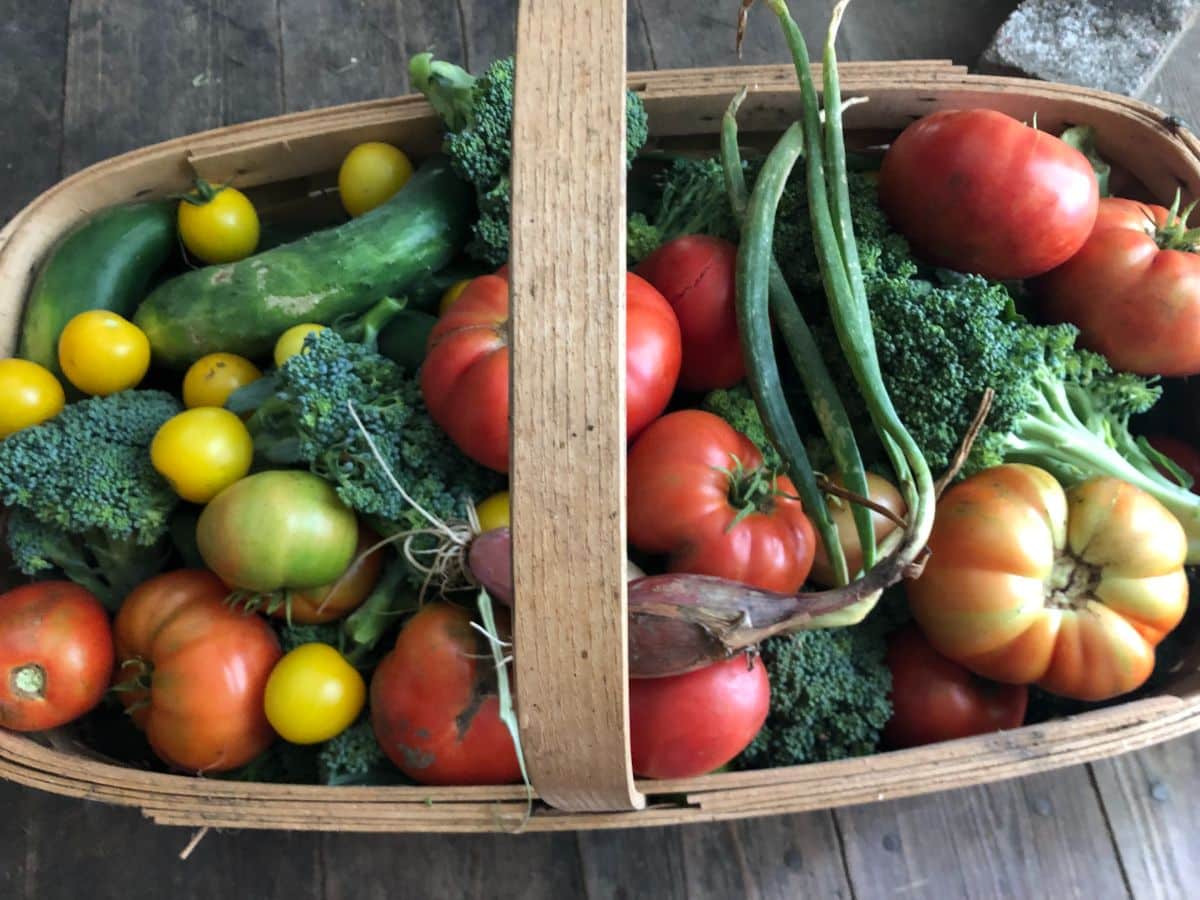
There is a lot to recommend dehydrating as a preservation process, though. If you’re wondering what the major advantages of dehydrating are, you’re in the right place. We’ve laid out the best reasons to dry or dehydrate your homegrown fruits, vegetables, or your farmers’ market fresh finds.
Jump to:
- Why You Should Dehydrate Your Garden Harvests and Farmers’ Market Scores
- 1. No electricity or utilities to store products.
- 2. Low time investment.
- 3. Easy to do.
- 4. Easy to use.
- 5. Moderate investment in equipment.
- 6. Alternative dehydrating methods.
- 7. Long shelf life.
- 8. Space-saving storage.
- 9. It’s easy to use only what you need.
- 10. Expand your garden product variety.
- 11. For some fruits and vegetables, an improved texture when cooked or reconstituted.
- 12. A good solution for vegetables that don’t can or freeze so well.
- 13. Best nutrient retention of frozen, canned, or dehydrated foods.
- 14. Portable food and compact nutrition.
- 15. Easy to add to dishes.
- 16. Endless combinations and product possibilities.
- Dehydrating Garden Harvests: One More Preservation Method to Add to Your Arsenal
Why You Should Dehydrate Your Garden Harvests and Farmers’ Market Scores
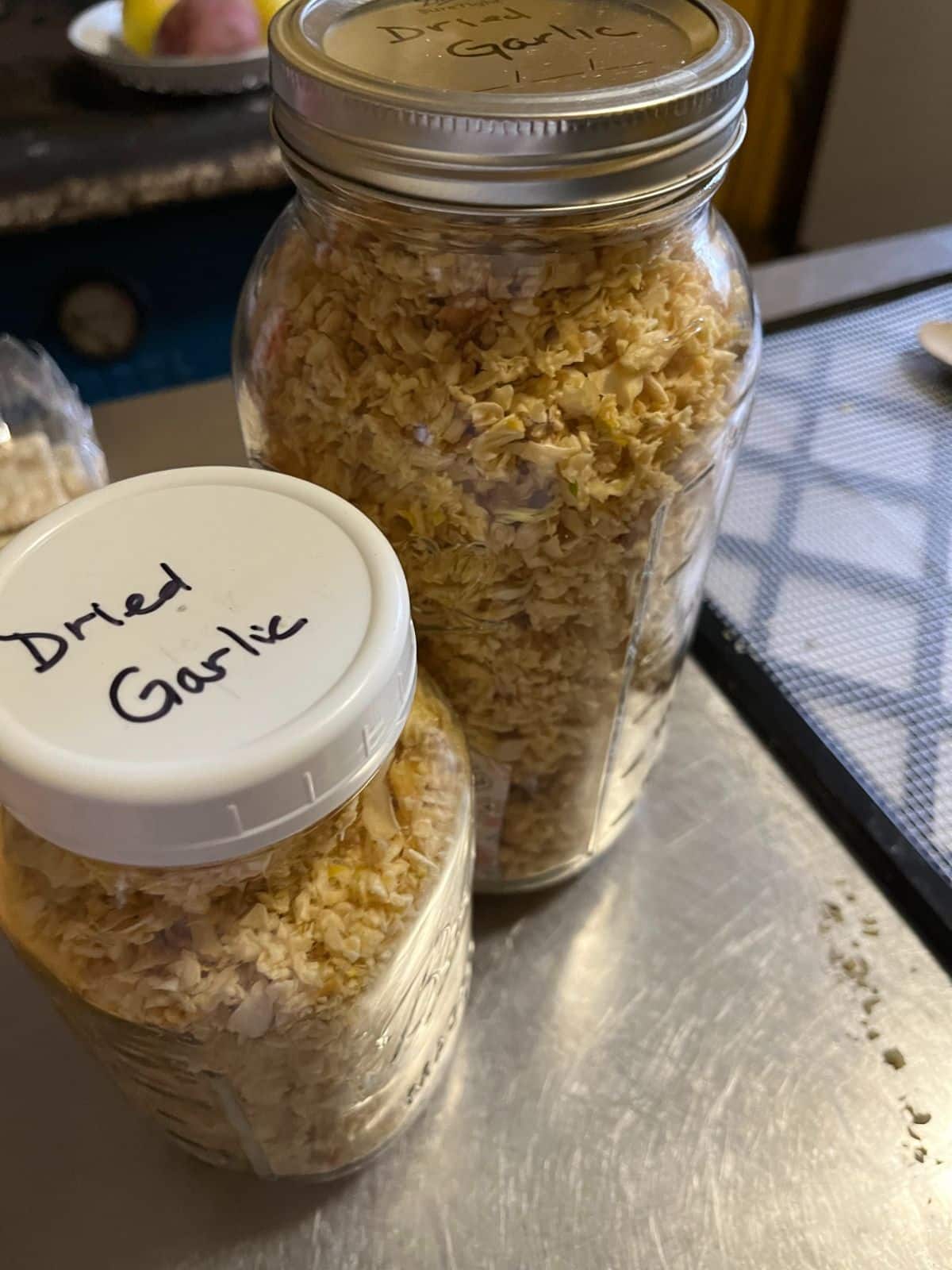
Once you start dehydrating, the benefits quickly become clear. To convince you to make that leap, here are some of the biggest benefits of dehydrating fresh fruit, berries, herbs, and vegetables:
1. No electricity or utilities to store products.
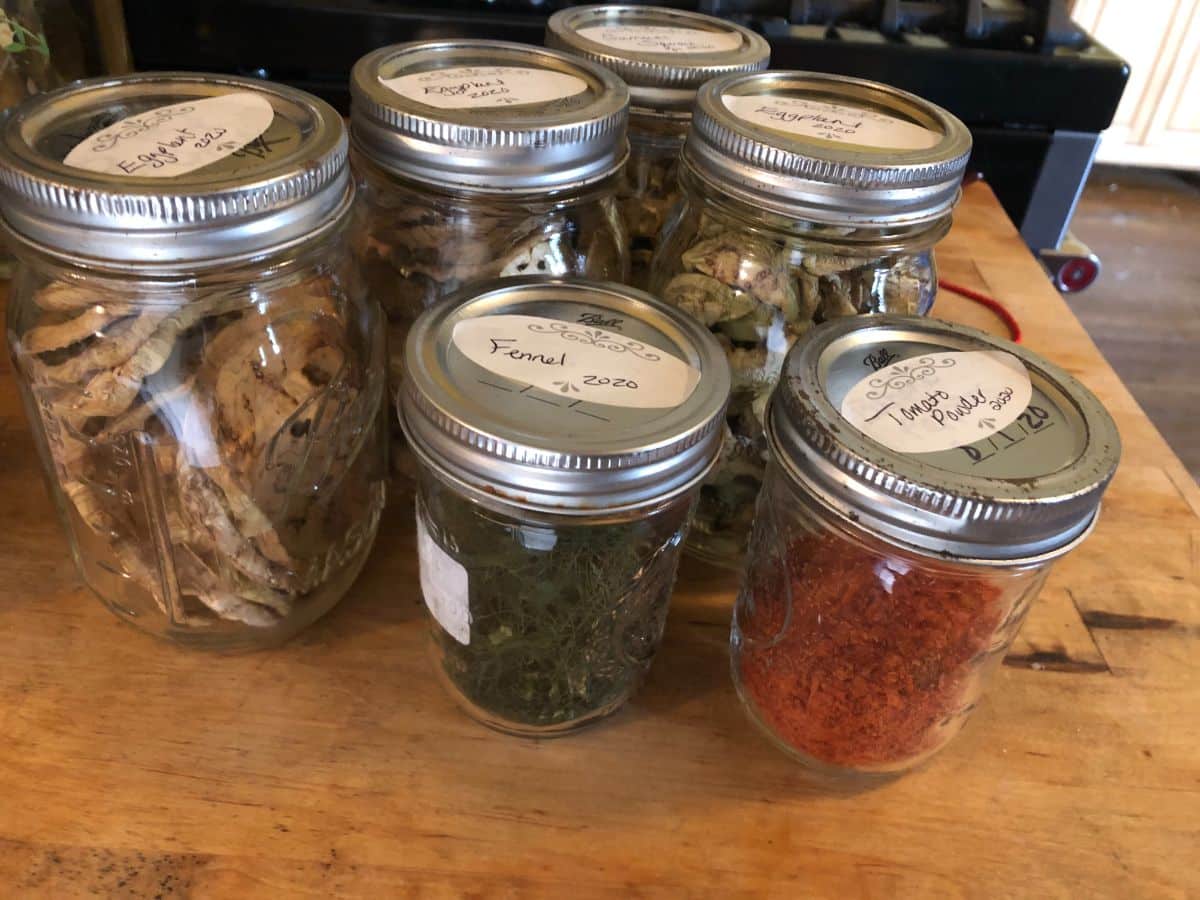
This is huge. Once your produce is dried and packed, there is no more need for utilities. No cold freezers to maintain, and no electricity needed.
If there’s a storm and the power goes out, you don’t need to run an expensive generator to save your preserved foods. You don’t have to worry about trying to pack your products in ice or not opening the fridge or freezer until the electricity is restored.
You don’t have to worry about them at all—and you’ll enjoy having nutritious food on hand that only needs hot water to use it!
2. Low time investment.
Compared to other preserving methods (and compared to canning in particular), dehydrating does not require a lot of your time. Yes, there is time spent in slicing or cutting and prepping, as any preservation method would require. And yes, the dehydration process itself takes many hours.
Most of the time involved in dehydrating is just letting the dehydrator work. Time ranges from a few hours to 12 or more are not uncommon. But that’s not an active, busy time for you. You can tend to all manner of things while your dehydrator does the work for you.
3. Easy to do.
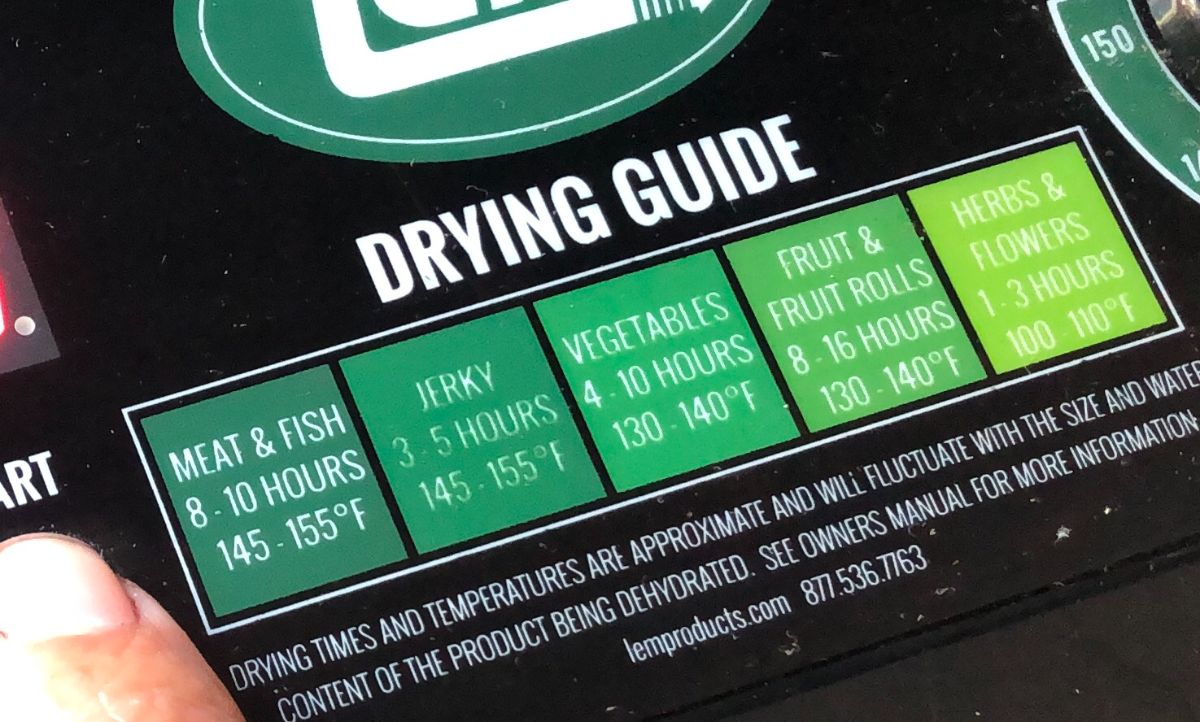
Dehydrating is very easy. We tend to overlook it because it’s not as familiar to a lot of us as freezing and canning are, but once you start, you’ll wish you had done it years ago.
There is a very short learning curve to dehydrating. It’s easy to learn as you go. Get a good book, follow a good resource or two, and learn to dehydrate one thing at a time when you have it. There’s a little bit to know about the right way to prep specific fruits and vegetables, and after that, it’s a matter of setting the right temp and time and knowing what to look for when the drying is complete—and a good book will tell you that, too.
4. Easy to use.
Finished dehydrated fruits, berries, and vegetables are easy to use. Many can be enjoyed dry without rehydrating, like dried berries and apple rings.
For those that need it, rehydrating is easy, too—it's mostly a matter of soaking the dried food in cold water overnight or for several hours or of rehydrating in hot or boiling water, which for most things is just a matter of minutes. And it doesn’t necessarily have to be water; you could rehydrate it in broth or juice.
How and if you rehydrate your dehydrated foods depends on what they are and how you want to use them, but there is nothing complicated about it.
5. Moderate investment in equipment.
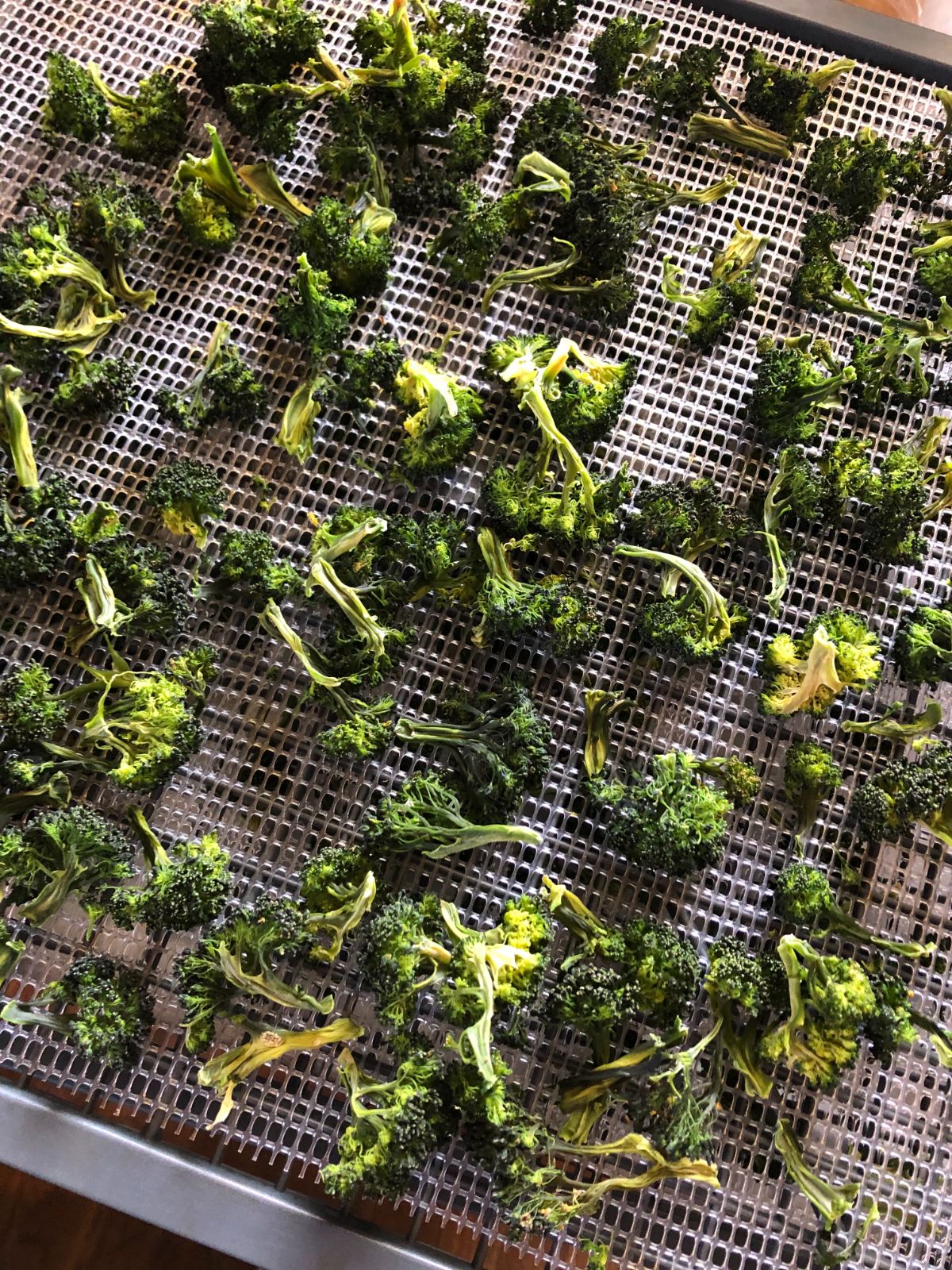
There isn’t a lot of specialized equipment involved in dehydrating garden harvests. Most of what you need, you already have.
You may choose to invest in some handy gadgets that make things faster and easier in the future, but aside from what you’ll dry it in, there's nothing that you have to buy. Even buying a dehydrator is optional (but highly recommended). Realistically, though, if money is an issue, you could get started without spending a single cent.
6. Alternative dehydrating methods.
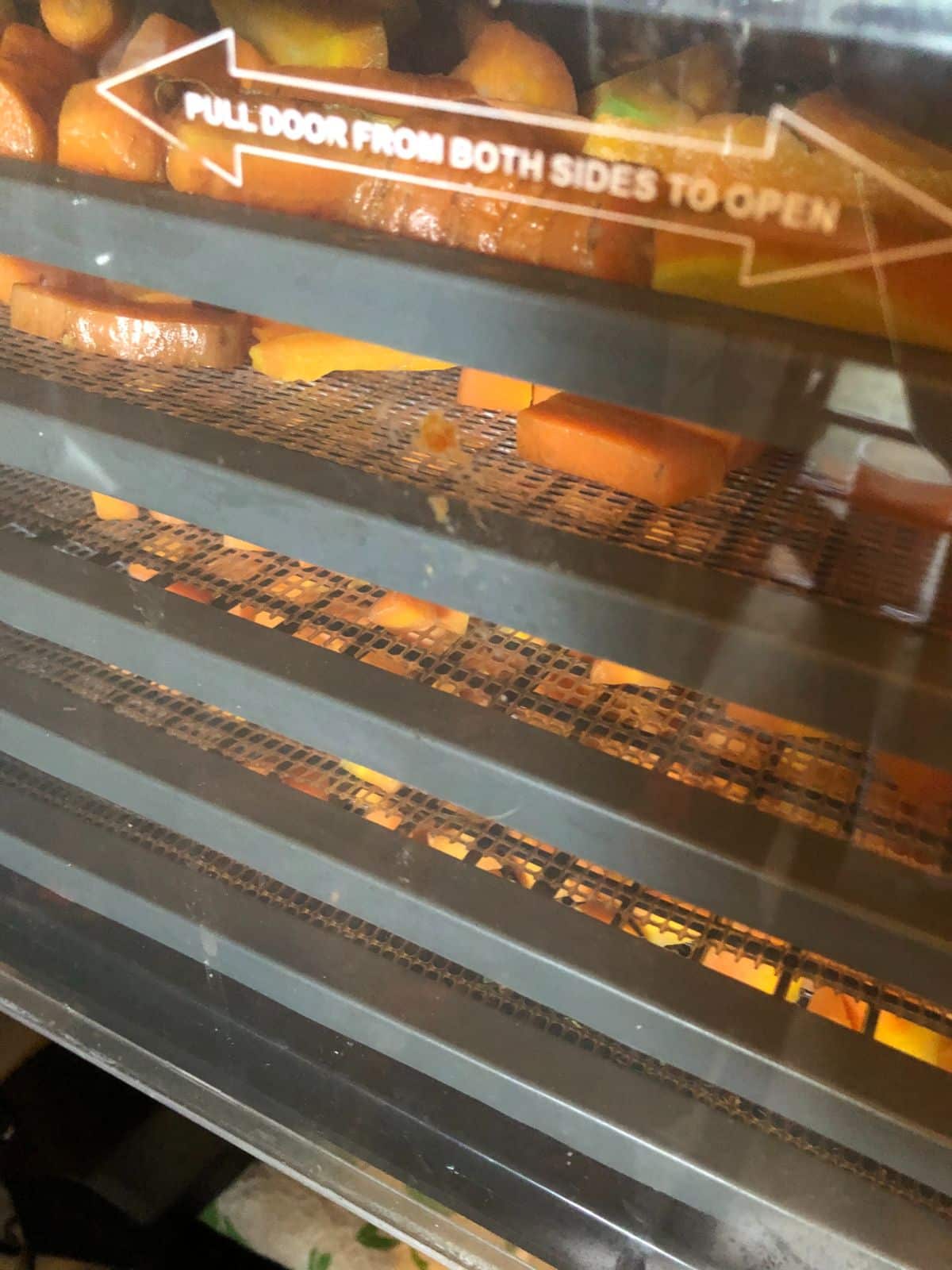
There are a few alternatives to buying a dehydrator. Good dehydrators can be had for around $100 to $200 (sometimes less on a deal or if you find one second-hand). That’s not nothing, and if you do a lot of dehydrating, you’re likely to want to invest in a modestly priced dehydrator.
If buying a dehydrator needs to be put on your wish list for a while, if you want to try out dehydrating before you invest, or if you’re interested in off-grid options, there are some alternatives to drying your fruits and vegetables in a dehydrator. These include solar, air, and oven dehydrating. With other types of preservation, like canning and freezing, there are no alternatives.
If you own an air fryer, you might also check to see if it has a dehydrator setting. Air fryers are small in capacity compared to other options, but they can work well for small amounts of produce.
*Note—you may be wondering why we so strongly recommend a dehydrator over these options, especially as some of these options are cheap, free, or things you would already own. The biggest reason is that temperature control is a lot more controllable and consistent with a dehydrator. Most home ovens do not go low enough, and you would have to run them on their lowest setting with the door ajar, which is a big expense in utilities, is less safe, and the drying is more uneven and runs a risk of cooking and not dehydrating.
Other options like solar and air can be used for some types of produce (usually fruits and herbs), but not all—for safety’s sake.
7. Long shelf life.
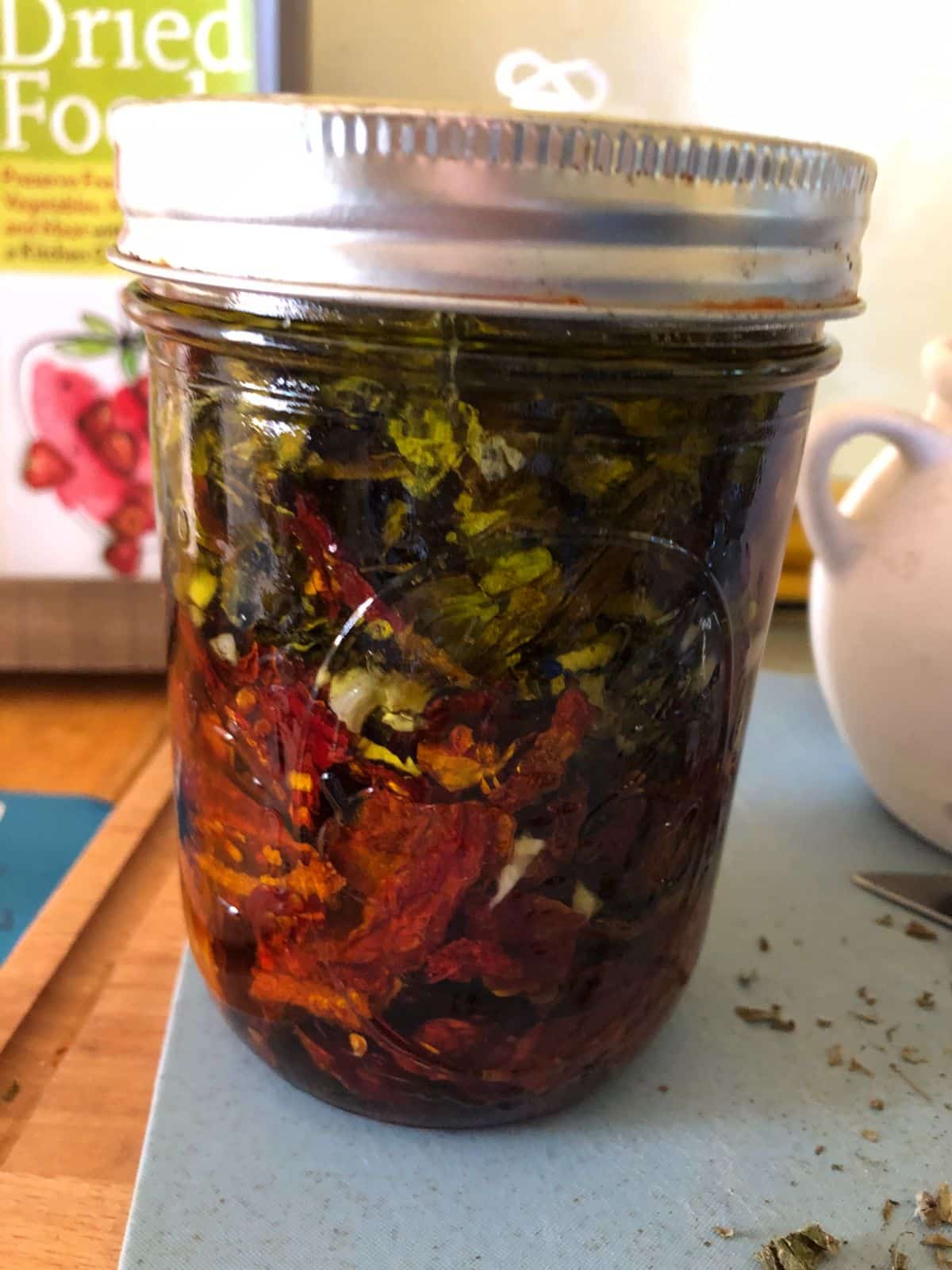
Properly dried and well-stored dehydrated herbs, fruits, and vegetables store for a very long time. Officially they can store for up to two years, but “unofficially” practical food preservers may keep their dried foods for up to five years (with an eye to quality and continued signs of safe storage). Dry powders have the shortest shelf life, and even those are nine months or more, perhaps longer if kept in a freezer.
A shelf life of two to five years is longer, even, than the official shelf life of canned goods (which experts say is one year, maximum of two for home canned foods). It is much longer than what is recommended for frozen fresh produce, which is only put at eight to 12 months.
8. Space-saving storage.
Another huge reason to dehydrate and store your fresh homegrown produce is storage space. Not only will you not need a freezer to keep your food, but you won’t need freezer space, either. That means no investment in a large, expensive appliance (that will have an estimated lifespan not much longer than five years and runs the risk of breaking down and spoiling your preserved foods). It also means you don’t have to worry about how much space is left in it.
Dehydrating simply removes the water from fresh food. (Bacteria, mold, and pathogens need moisture to grow—this is what makes dehydrating safe and shelf-stable.) This shrinks the food. By a lot! Most of the content of food is water; this is especially true for fruits and vegetables.
Dehydrated foods will lose between 50 and 75% of their weight and mass when dehydrated. That means you can store about three times as much food in the same amount of space! And maybe even more, because when things are smaller, there is less air space left between them, further reducing the space the same piece of fruit or the same vegetable takes up.
You can also store an entire batch in just one or two bulk jars or packages—less packaging!!
9. It’s easy to use only what you need.

Even if you’re working from a bulk jar, it’s easy to use only what you need. This isn’t the case when you unfreeze fruits and vegetables and other produce. If you want a small portion of broccoli, you have to freeze it in a small portion because you can’t keep thawing, removing, refreezing, and rethawing the package (the exception to this would be for things that can be flash frozen, like berries, but that is a lot of extra steps that requires a lot of empty freezer space to complete).
With dried produce and herbs, all you have to do is take out or shake out what you need, recap, and cook away.
10. Expand your garden product variety.
Ever feel like the only thing you can do with loads of tomatoes is make tomato sauce? Or some variation of it? This may not be exactly true, but using different preservation methods gives you the opportunity to make different products with what you grow.
For example, go ahead and make the sauce, but also make some “sun-dried” tomatoes. Do some dried diced or powdered that can be added to any number of dishes and/or used as a thickener.
If you have more strawberries than you would use from frozen, dry some for healthy snacks, or make delicious strawberry fruit leather. Peaches and lots of other fruits and berries make excellent leather, too!
Adding dehydrating to your preservation list opens some doors and helps you be more versatile and flexible and get more use out of what you grow.
11. For some fruits and vegetables, an improved texture when cooked or reconstituted.
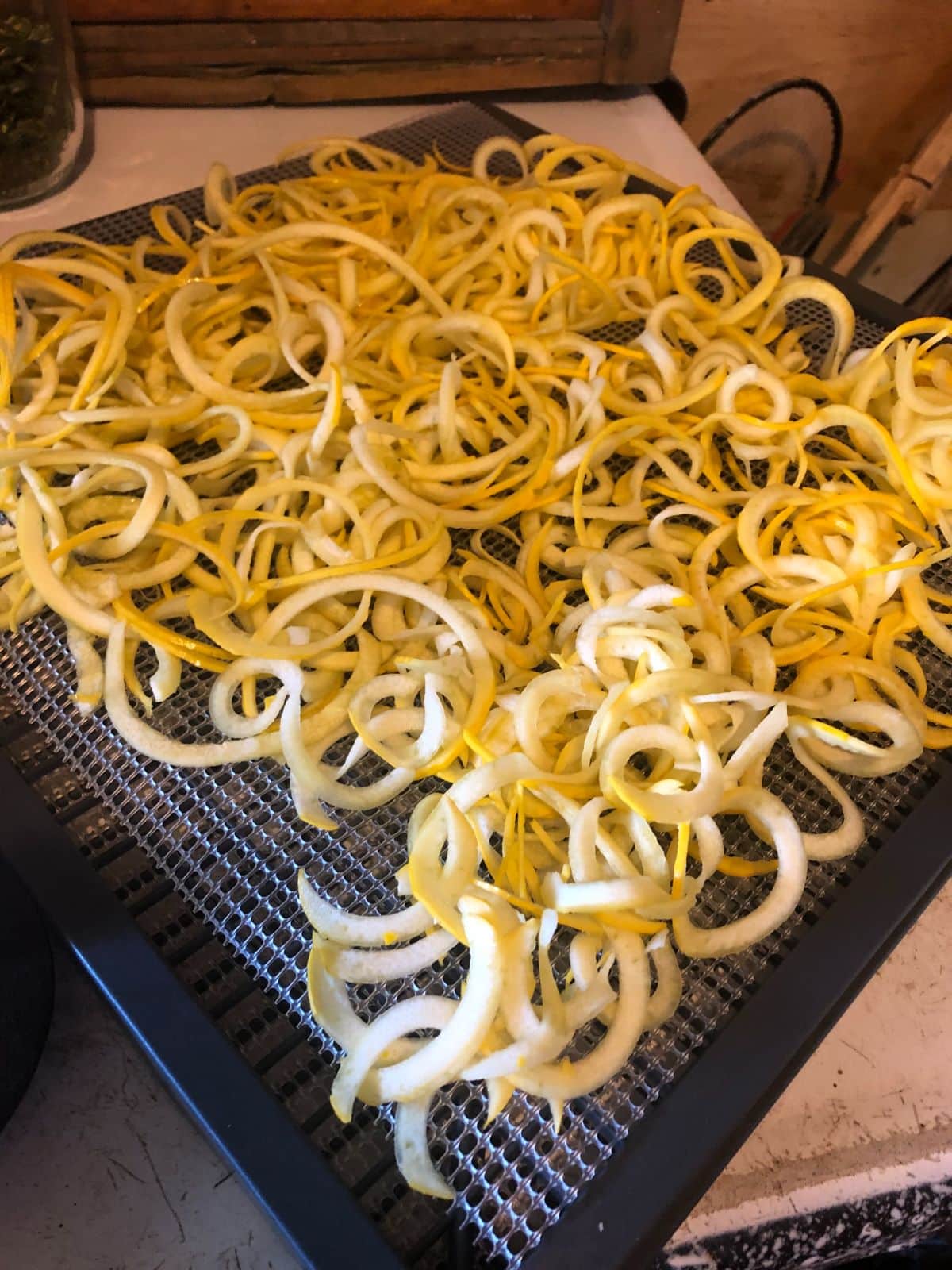
You know those vegetables that seem to overcook or fall apart, and it almost doesn’t matter what you do? For many of them, dehydrating is a better choice. Why? Because it’s not being cooked twice to get it to the table.
Dehydrating is not cooking. Properly dehydrated fruits and vegetables should not taste like they’ve been cooked. This is why we do things low and slow when we dehydrate them. Blanching and heat processing, both necessary in other preserving methods, are a cooking process, at least to a degree.
What ends up happening is that your fruit or vegetables are cooked at least partially when preserved, then again when heated and eaten. Produce that falls apart easily—like summer squash, zucchini, eggplant, and others—can virtually disintegrate by the time you eat it.
Take those same sliced vegetables and dehydrate the water out of them, and then when they are used, the heat goes mostly into rehydrating, leaving firmer vegetables that work better for soups, casseroles, eating, and even things like eggplant parmigiana.
Do note—some vegetables should be blanched before they are dehydrated to preserve color, stop enzyme action, and protect its taste. These are the same reasons we blanch things before we freeze them, but they don’t lose moisture when prepared like frozen products do, and the tissues don’t break down with the expansion and contracting of freezing.
12. A good solution for vegetables that don’t can or freeze so well.

Likewise, some vegetables aren’t well suited to canning or freezing. They get too mushy when they’re blanched and frozen, and canning can greatly change their flavor.
Asparagus comes to mind. When canned, the flavor is nothing like fresh asparagus. The texture can be very soft and mushy. Frozen asparagus is better, but the texture of it can also get very soft and mushy to the point of almost slimy. Preserving guides insist that you blanch asparagus first, but that almost guarantees the asparagus will be overcooked when you cook it.
Dehydrated asparagus, though, comes out much crisper and firmer and holds up well in prepared dishes—without the cooked taste, blanched color, and soft texture of canned asparagus.
13. Best nutrient retention of frozen, canned, or dehydrated foods.
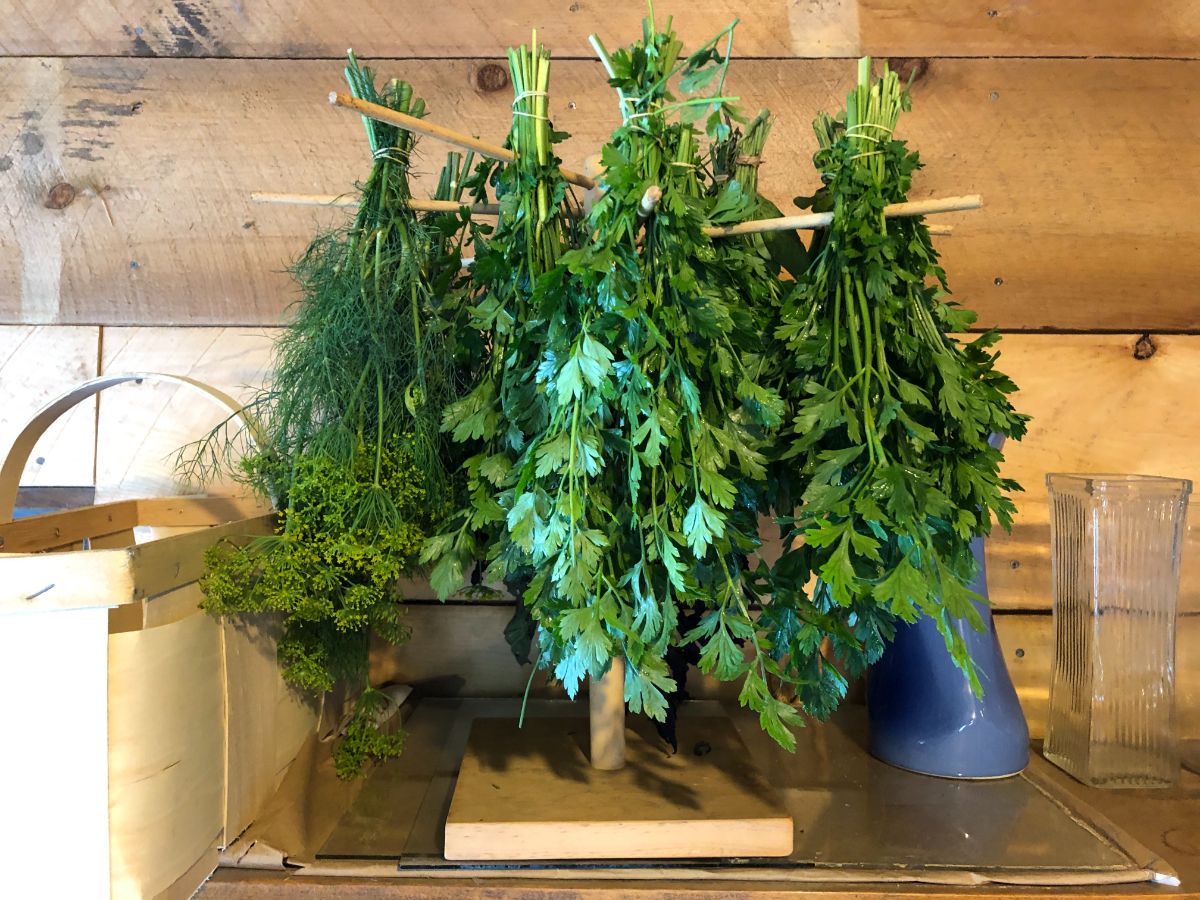
Dried foods are some of the most nutritious, nutrient-dense, and best-preserved nutrition there is.
Dehydration removes water, but as mentioned before, it doesn't cook the produce, so it doesn’t destroy vitamins and minerals like high heat and other preservation methods do.
WebMD explains it this way: “The dehydrating process retains a food’s original nutritional value. For example, apple chips will have the same calorie, protein, fat, carbohydrate, fiber, and sugar content as the fresh fruit.” (“Dehydrating Food: Is It Good for You? - WebMD”)
Even compared to fresh produce, dehydrated fruits and vegetables keep their nutrients for much longer than refrigerated produce. A few days is all it takes for fresh produce to lose vitamin, mineral, and antioxidant content. The losses can be as high as 50% in a few days, depending on the nutrient in question.
Information from the United States Department of Agriculture shows that dehydration preserves the most nutrients, with only a three to five percent loss of nutrients as compared to the 60 to 80 percent of canned goods and the 40 to 60 percent of freezing. Freezing is high because moisture expands and causes cell walls to rupture. Dehydration, once complete and with good storage, does not continue to deteriorate as much as frozen foods do, either.
14. Portable food and compact nutrition.
That same space-saving feature that makes dehydrated produce easier to store makes it easier to take with you. This gives you lovely, nutritious food for when you’re on the go. It also gives you a great way to take “fresh” food along with you when you travel.
It is especially ideal for long trips with limited shopping or refrigeration available. It is perfect for camping or glamping. Light, compact, easy to have a variety of portable food, and all you have to do is just add water. No matter where you go, you’ll make sure you have water!
Dried foods are perfect for hiking and day trips, too. There’s a reason it’s called “trail” mix!
15. Easy to add to dishes.

It’s simple to add all manner of dried ingredients to different foods and dishes. Not only can you use just what you need, but you can add it straight to soups, chilis, and casseroles just by adjusting the liquid upwards a little (if it’s a brothy soup, you may not even need to do that).
A favorite way to cook vegetables when making rice or pasta is just to throw it in with the water. For rice, you’ll want to add the amount of water to add enough for both the rice and vegetables. For pasta, just throw it in the water with the pasta! By the time the pasta is cooked, the vegetables will be a lovely al dente—perfection in one pot!
16. Endless combinations and product possibilities.
If this has your culinary gears turning, good. There are almost endless combinations and possibilities to use dried foods, herbs, vegetable and fruit powders, and more. Use them as seasonings, as main ingredients, as thickeners, or as nutrient boosters (like if you need to hide those veggies from picky eaters!).
Use dried ingredients in prepared dishes or use them as single-ingredient snacks (like dried cherries or apple rings that are delicious all by themselves); or use them to make a mix, like a trail mix with nuts, dried berries, and fruit pieces.
Mix up measured, prepared jars for a fast soup that only needs to be dumped into hot broth, or let your creative juices flow and wing it, pulling down a little of this and a little of that.
Dehydrating Garden Harvests: One More Preservation Method to Add to Your Arsenal
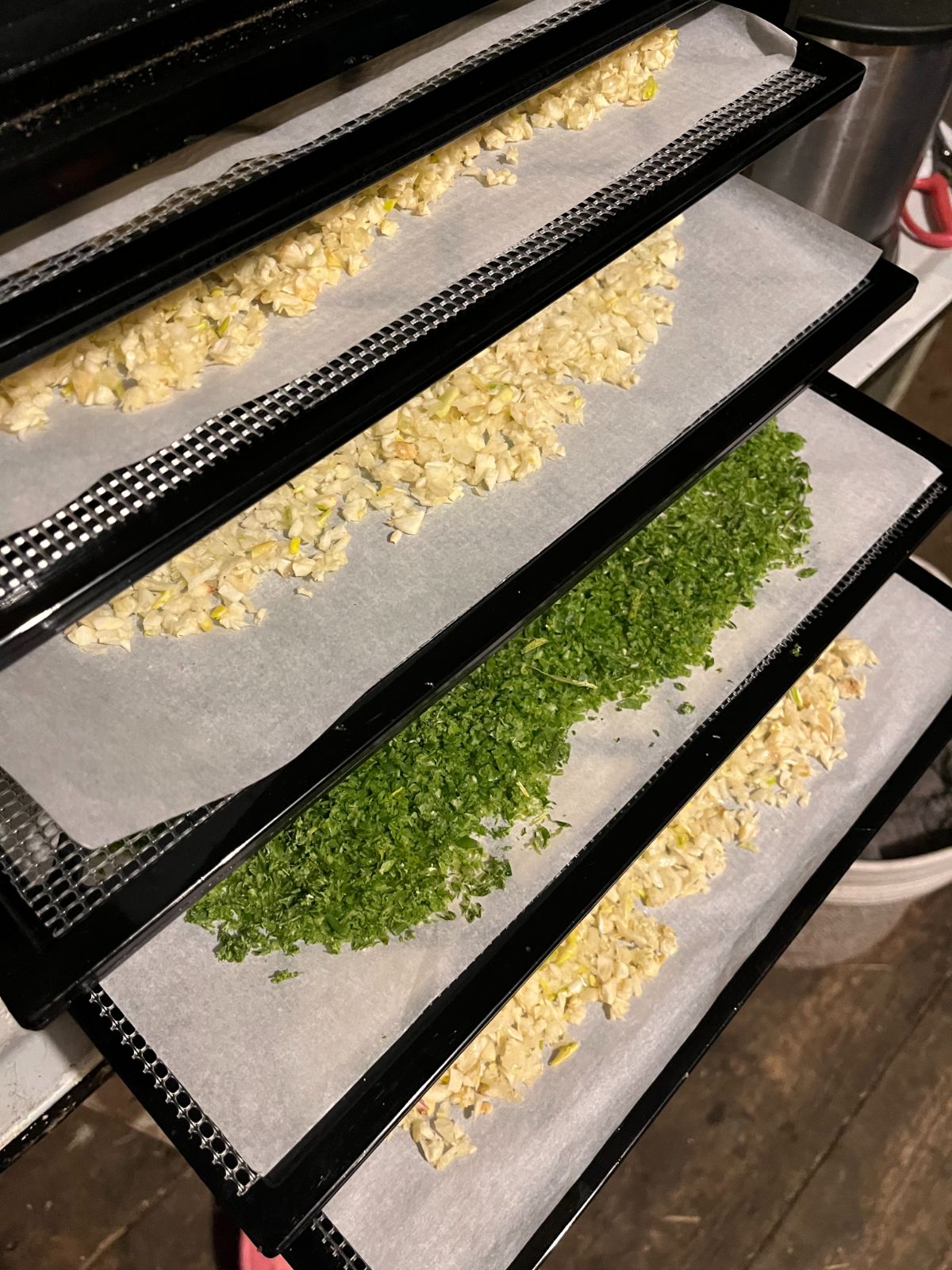
Dehydrating is fast regaining the attention it deserves. Make it a part of your preservation model. You may just find it becomes the main player!
Also, know that, as much as we’ve just gone on to extoll the virtues of dehydrating homegrown produce and fresh local finds, all three of the major preservation methods—canning, freezing, and dehydrating—are great. We all have our favorites, but there’s no need to pick just one (unless you want to).
Variety is a spice of life, too, so whether it’s the only type of preserving you do or whether you add it to the mix, do give dehydrating a try.

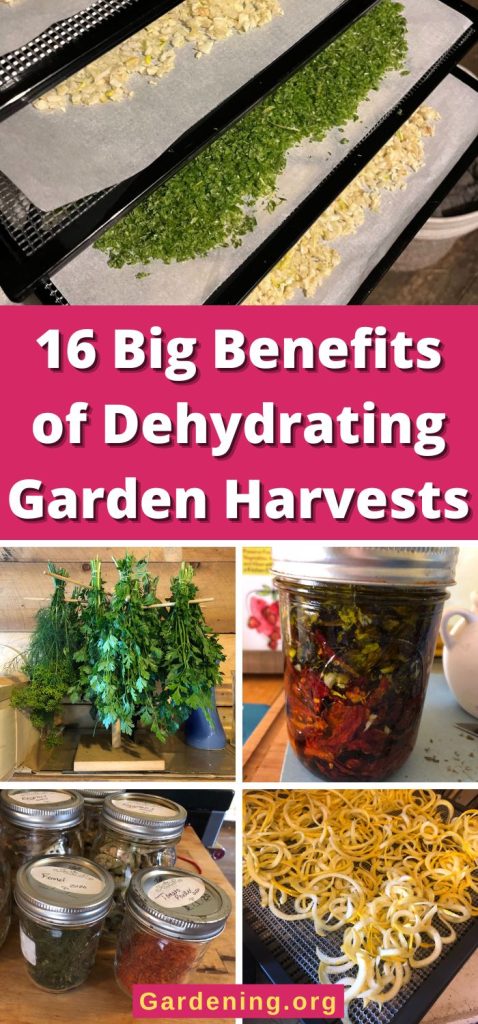
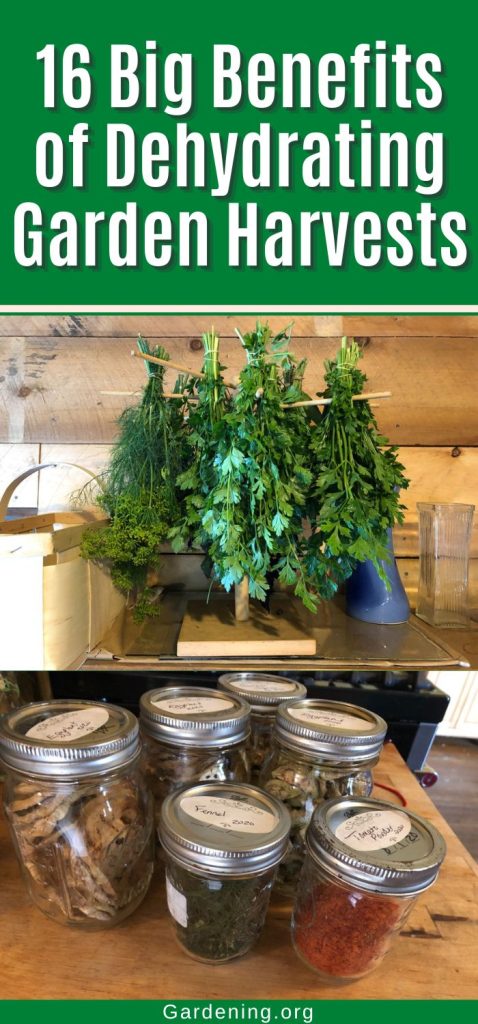
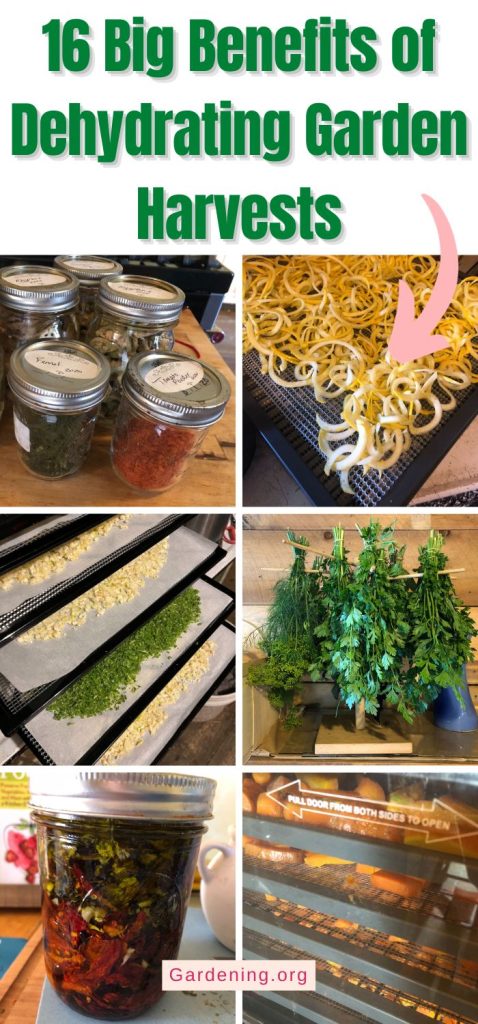


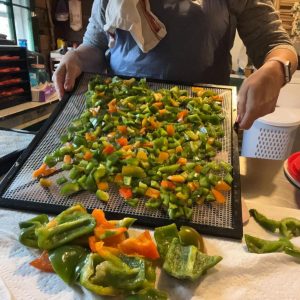

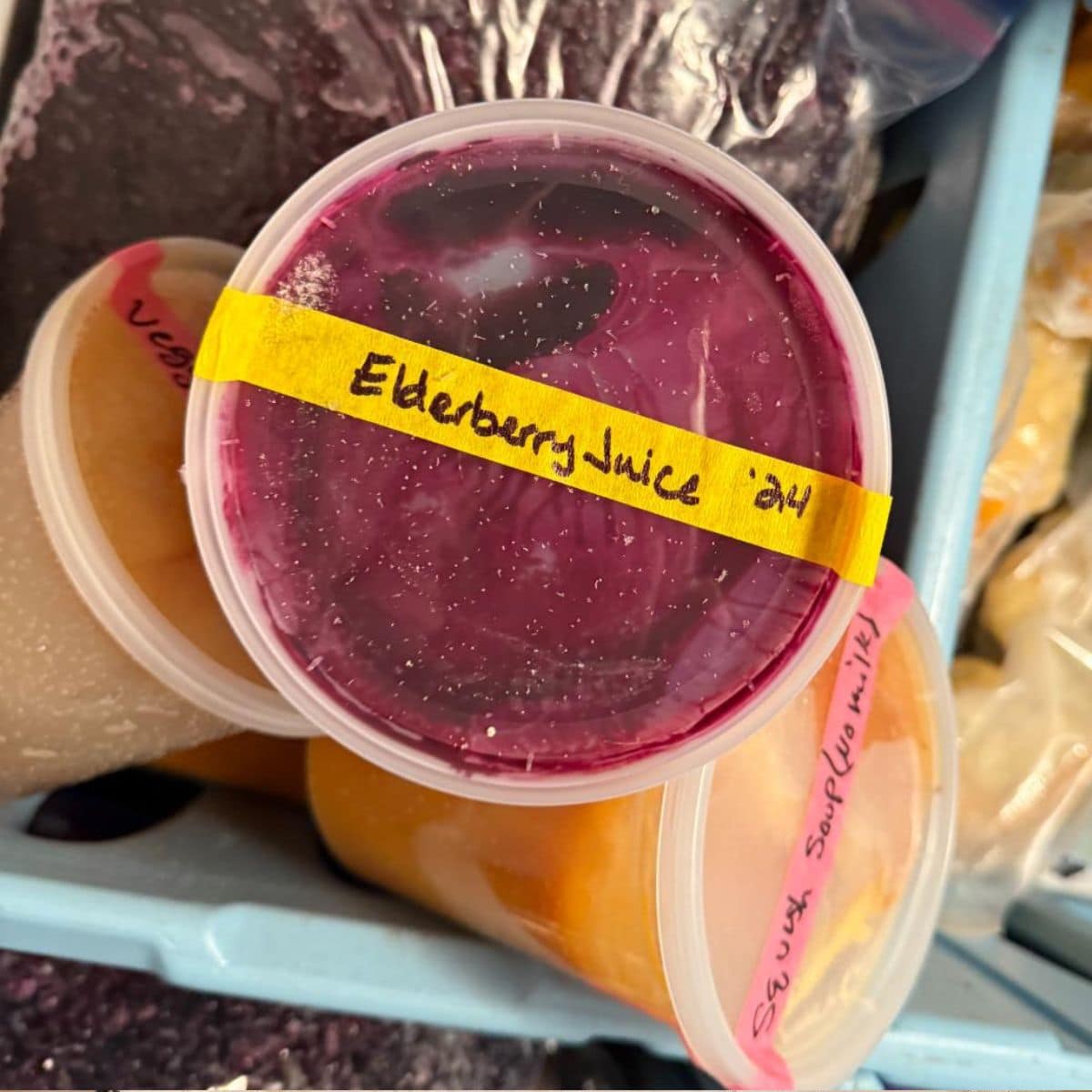
Leave a Reply